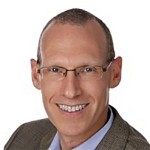
[button title=”Visit Dicom Grid at HIMSS in Booth #5614″ link=”http://www.dicomgrid.com/request-a-demo-at-himss” new_tab=”yes” three_d=”yes” animation=”left-to-right” animation_delay=”1000″]
By Morris Panner, CEO, DICOM Grid
Twitter: @mpanner
Twitter: @dicomgrid
As the global population continues to face inevitable disease outbreaks – think Ebola and measles – healthcare technology is playing an increasingly important role in awareness and prevention. Technology innovations, in fact, are key in preventing the spread of infectious diseases, particularly in developing nations.
The problem is that many people in much of the developing world and rural areas still lack the necessary technology tools to stop epidemics before they spread. One of the factors in the spread of Ebola last year was the lack of access to information concerning symptoms in many of these developing countries.
In the U.S. and other developed countries, however, the large majority of us are fortunate to have easy access to the Internet and TV, which were both quick to broadcast symptoms to be wary of during the Ebola outbreak. Ultimately, the faster the information is disseminated, the earlier people can create an awareness and prevention plan. And, as we have seen in past epidemics, time saved means lives saved.
“Emerging technologies can help early-warning systems, outbreak response and communication between healthcare providers, wildlife and veterinary professionals,” four doctors at the Mercy hospital research laboratory in the Sierra Leone city of Bo wrote in the Lancet.
Places all over the world have already reaped benefits from websites, social media platforms, mobile devices and apps that allow people to communicate from remote areas and coordinate responses. Instead of smoldering doubt and fear, communities leverage healthcare technology to take proactive steps against the disease in question. In situations where chaos begets order, care providers look towards technology in the fight against infectious outbreaks.
Here’s one example: According to a recent report, IBM invested in a technology that allows citizens to report Ebola symptoms directly to the government. Using supercomputing powers and analytics, the system then scans all messages to warn hospitals of emerging cases. Hospitals were better able to request more testing laboratories and equipment through the tracking of emerging cases. Similar technology is also being used in the spread of measles and malaria in these nations.
The geographic information system (GIS) also has shown great potential for providing real-time details regarding the spread of a disease. By using smartphones to keep track of people’s movements, health officials can collate information and examine the big data provided to construct a picture of how a disease is spreading, pinpointing hot spots and infection vectors.
Cloud technology is another area opening up new windows of opportunity in how healthcare workers communicate with each other. The success of teleradiology is largely a result of enhanced medical image exchange platforms; in fact, teleradiologists were among some of the early adopters of cloud technology. This field relies heavily on the seamless and easy transport of medical images between disparate locations.
With people in countries around the world becoming more intertwined through social media and other forms of online communication, the medical industry is now following suit and broadening its international presence. Successful cloud technology can be implemented in an easy and seamless setup, anywhere in the world. With just a browser and bandwidth, medical institutions and providers everywhere – including developing nations – can expand their global reach.
While mobile technology continues to be a source of rapid communication and tracking of Ebola cases in Africa, several hospitals within the U.S. continue to work on devices to further secure hospitals that are housing a patient. For example, WPI, Texas A&M and the University of California, Berkeley are working on repurposing existing disaster zone robots to focus on Ebola. Such robots could take over the dangerous task of cleaning rooms.
Electronic healthcare record systems (EHR’s) represent another technology tool that can aid in the detection of developing disease outbreak trends. National health databases, when crosschecked with travel records and individual symptoms, can give doctors the information they need to detect patients at risk. In fact, some organizations already successfully have implemented disease-specific programs, such as the MEEDS app, which helps monitor malaria in a specific region. With MEEDS, or the Malaria Early Epidemic Detection System, doctors and health workers can instantly report new cases of malaria to a centralized database. Local doctors then use their local knowledge to make house visits. These visits have allowed health officials in Zanzibar to identify many unreported cases and follow up on known cases.
Healthcare technology has the capacity to not only battle infectious diseases from a physical standpoint but also from an emotional standpoint. For example, several hospitals have employed remote Wi-Fi access in various areas of the world to allow Ebola or other infectious disease patients to Skype or video chat with other family members. Many patients noted that this access kept their spirits high and increased their will to survive.
The healthcare world is finally becoming one of connectedness and innovation. Not only are things more linked than ever in the digital world, but so are people. As the recent Ebola outbreak shows us, a single disease case in a remote corner of Africa can have widespread global health implications. Faster and stronger technology capabilities will help international organizations stay ahead and in control when these types of deadly outbreaks occur.
About the Author: Morris Panner is the CEO of DICOM Grid, a health IT company that helps hospitals better manage, share and store imaging data in the Cloud. Prior to joining DICOM Grid in 2011, he served as the CEO at OpenAir, Inc. which he led from start-up to its successful acquisition by NetSuite. A graduate of Yale and Harvard Law, Panner speaks and writes widely on technology and policy and has been featured in Forbes, Washington Post, BusinessWeek and the New York Times.
